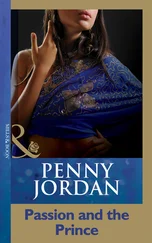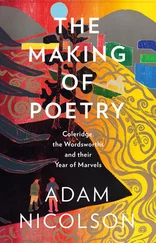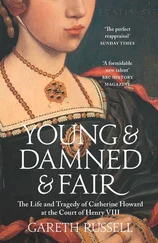‘FOCA had a seat on the World Council, and we found a compromise whereby in addition to Formula One having a seat on the World Council, another person who is President of the Manufacturers’ Commission has a seat. He represents the World’s Motor Industry, the big manufacturers. When Formula One matters were discussed, the legalists had their representative and historically this has always been Ferrari.’
Ferrari, in typical Latin fashion, has always been alert to the most imperceptible political currents, and it was this talent that kept it in the thick of things. As Mosley says, ‘In the 70s, when FOCA became powerful, we ended up with FOCA on one side and FIA/FISA on the other, with Ferrari as the fulcrum. It would move a little bit one way and then a little bit the other way, influencing the decisions. Enzo Ferrari was an absolute master of that sort of politics. He wanted to make sure Formula One succeeded, so he nearly always backed Bernie [Ecclestone], as he realized that Bernie was going to make Formula One into something big. However, by moving a bit towards the governing body he could obtain a more favourable position in negotiations, which was a very wise move. Now all the relationships between me, Bernie and Ferrari are very solid.’
So what if, for argument’s sake, someone stood up and said: ‘Well, Williams should be our representative as it has been the most successful team in the last five years,’ or ‘McLaren because it dominated the 80s’? What would happen?
Mosley smiles before replying with certainty. ‘Nothing would happen. It would stay as it is. Ferrari has got one overwhelming advantage and that is it was there on 13 May 1950 (the first Formula One World Championship race) and has continued to be there, and even when it wasn’t winning it has been a tremendous part of Formula One. Now it is right up at the top again. As Chairman Mao said, “Power comes from the barrel of a gun” – although in the case of Formula One power comes from success. If you’re successful and have got tradition, your political position is very strong.’
Mosley also has first-hand experience of Enzo Ferrari’s schoolboy humour. ‘Twice a year all the teams and everyone would go down to visit Ferrari, and we’d all have lunch together. Enzo would always sit Bernie next to him, and when Bernie wasn’t looking he’d slip a large piece of Parmesan cheese on his plate. According to the old man, Parmesan has aphrodisiac qualities, and he’d always say without fail “that will get the little man going”. It always made him crack up right to the end of his life.’
A clever man with a keen nose for politics, Mosley freely admits to being completely seduced by Ferrari. ‘If someone said to me you can have any job in motorsport, I’d choose to run Ferrari. I quite envy Luca [di Montezemolo, the present chairman] his job. I know it would be challenging and difficult, but then all the top jobs are. I have no doubt that it would certainly be the most interesting.’
Bernie Ecclestone, the President of the Formula One Constructors’ Association (FOCA), is the man who has made Formula One an exciting, visually entertaining sport and a business that is a commercial success. Having known Enzo Ferrari so well, he fondly remembers the old man, and Bernie’s trepidation at what might happen after his death in 1988.
‘I have many happy, personal memories of Ferrari as I had a long friendship with the great Enzo, who was always supportive of all I did. When he died I missed him on a personal level, and I also wondered what would happen to Ferrari and if it would continue in the same way. I am delighted to see that the team has followed in the footsteps of tradition and is being run in the same way by the right people, who will ensure that it grows and develops as we enter the next millennium and the 21st century.’
GRADUALLY THINGS STARTED TO IMPROVE
The death of the great Enzo Ferrari in 1988 was the end of an era at Ferrari. He had been the creator and motivating force of the car company for over 40 years and now, finally, it was time to take stock and move on towards the 21st century.
When Chief Designer John Barnard left Ferrari for the first time at the end of 1989, Alain Prost nearly won the World Championship the following year in 1990 before the famous coming together with Ayrton Senna at Suzuka effectively lost Prost the Championship.
This prompted Ferrari to appoint a new heir not only to take over the running of the company but also to lead it into the new millennium. The new messiah was Luca di Montezemolo, one of Italy’s brightest international businessmen, who had already achieved success at Ferrari when he was team manager at the time Niki Lauda won two World Championships (1975 and 1977). Early on in his career, Montezemolo had been earmarked for great things by his mentor, Fiat boss Gianni Agnelli and he had moved through the ranks at Fiat. He had also been head of the organizing committee for the football World Cup held in Italy in 1990, before he had been offered the top job at Ferrari in 1992.
As well as being bright and vastly experienced in the realms of international marketing and commerce, Montezemolo was aware of the tradition and history so integral to Ferrari. He was therefore ideally placed to lead the company. It was to be a quiet and dignified revolution as opposed to an outright battle.
Montezemolo’s strategy was to get the best people in the top positions to enable the Formula One team to start winning again after a disappointing 1991 season. One of his first moves was to recapture award-winning designer John Barnard to prepare a competitive car.
Barnard re-joined his old stable on 1 August 1992, and took up the challenge of getting involved in a team that was on the edge of a new renaissance. Like many clever, successful men he was seduced by the thought of getting it right at one of the most difficult, disparate teams in Formula One, and he had enough self-confidence to think he could pull it off. In theory it should have been a happy union between a large budget and a well respected talent. But for the Ferrari–Barnard association to be truly happy it would need serenity, patience and total commitment on both parts and that wasn’t going to be easy.
It started off full of golden promise. Barnard had to gather a new team to work at the new offices in Shalford, Guildford that would effectively be the design centre (Ferrari Design and Development – FDD) for Ferrari Formula One cars. At the same time he was under pressure to produce a new car for 1993. ‘We agreed that I would take an overview and get things up and running. But within days of signing the contract, I was being asked how quickly I could do a new car. I hadn’t even got a building to work from…’
Having secured a slightly cynical but nevertheless brilliant designer and parked him in England to get on and design a new car, Montezemolo continued with his search for the right people. Previous Technical Director Harvey Postlethwaite had been persuaded to return. ‘The first time was wonderful, when I was working for the old man [Enzo Ferrari]. He could be difficult but everyone knew where they stood and he kept it all together by ruling with a rod of iron. The second time was awful. On my first day back in 1992, I realized I had made an awful mistake in being persuaded to return. There was no direction and things changed every five minutes. It was the start of two truly awful years and I couldn’t wait to get out. I used to keep a piece of paper with my salary written on it in the top drawer of my desk; when things got really rough, I would open the drawer, look at the figure and remember the reason I had returned!’ Postlethwaite sums up his feelings by declaring, ‘Ferrari is like a film star with halitosis – from afar it looks glamorous and seductive, but get near and it poisons you.’
Читать дальше
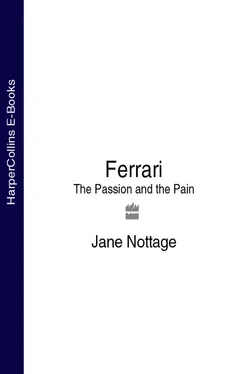

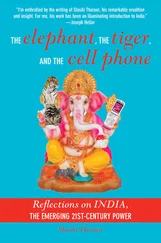
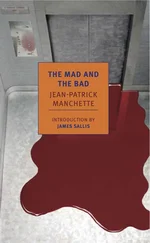

![О Генри - Принцесса и пума [The Princess and the Puma]](/books/407345/o-genri-princessa-i-puma-the-princess-and-the-pum-thumb.webp)

